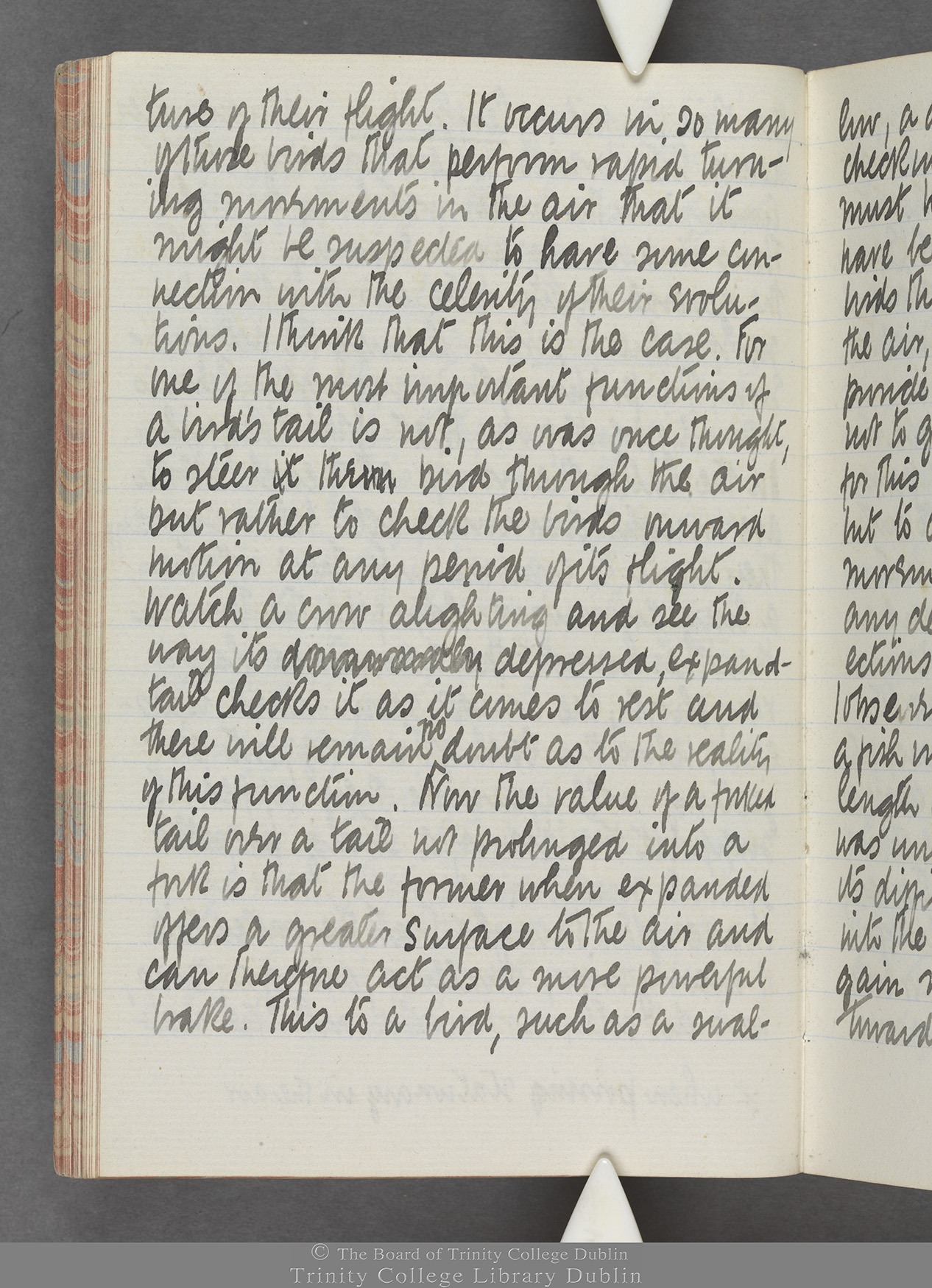[April 28th 1916]
ture of their flight. It occurs in so many of these birds that perform rapid turning movements in the air that it might be suspected to have some connection with the clerity of their revolutions. I think that this is the case. For one of the most important functions of a bird’s tail is not, as was once thought, to steer the bird through the air but rather to check the bird’s onward motion at any period of its flight. Watch a crow alighting and see the way its depressed, expand-tail checks it as it comes to rest and there will remain doubt as to the reality of this function. Now the value of a forked tail over a tail not prolonged into a fork is that the former when expanded offers a greater surface to the air and can therefore act as a more powerful brake. This to a bird, such as a swal-
